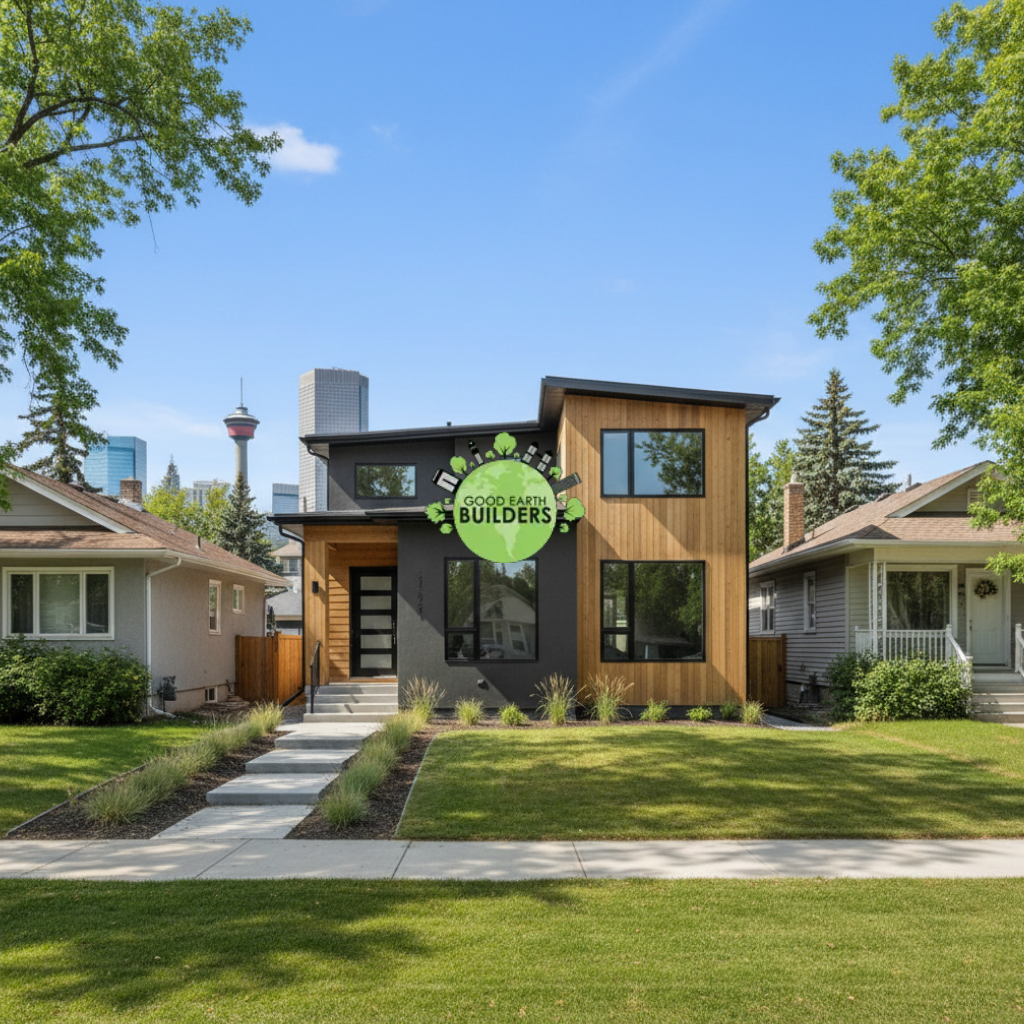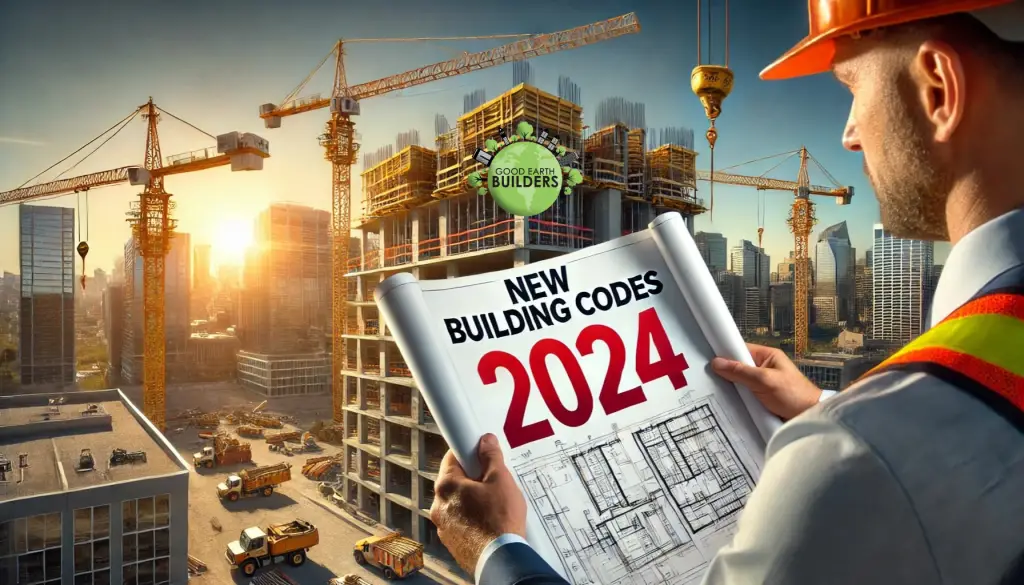Monday, October 13, 2025
Calgary is no longer just Canada’s energy capital; it has become the national leader in per-capita housing starts. The city is undergoing a transformation driven by historic population growth and a fundamental shift in municipal policy that prioritizes density in established communities. For property owners and investors, this is the definitive signal: the path to maximizing real estate returns in 2025 is through infill development.
This exhaustive guide is your complete roadmap, detailing the why, where, and how of successful infill investing in Calgary, from understanding the new zoning landscape to executing profitable multi-unit projects.
Part 1: The Infill Imperative—Calgary’s Housing Strategy and Economic Drivers 🏙️
The economic forces driving Calgary’s real estate market are overwhelmingly geared toward infill and multi-unit construction. Recent data confirms a sustained surge in new home construction, supported by persistent positive builder sentiment and unprecedented demand.
1.1. The Policy Shift: From Sprawl to Density
Calgary’s “Home is Here” strategy, combined with the city-wide zoning changes introduced in 2024, has fundamentally de-risked and streamlined infill projects. The objective is clear: deliver the “missing middle”—townhomes, rowhouses, and multiplexes—to house a burgeoning population that is now seeking relative affordability compared to Vancouver and Toronto.
- Zoning Simplification (R-CG): The Residential-Grade-Oriented Infill (R-CG) district is the new baseline for development. It allows for up to four units on a standard inner-city lot as a permitted use in many areas. This shift removes bureaucratic hurdles and dramatically shortens the development permit timeline, a critical factor for financial viability. Previously, achieving this density often required lengthy, risky rezoning applications.
- Record Approvals: In the first half of 2025, market home development permit approvals exceeded 10,000, continuing the trend of Calgary leading major Canadian cities in housing starts per capita. This sustained momentum is a testament to the city’s proactive, supply-driven strategy.
1.2. The Multi-Family Financial Advantage: The Build-to-Rent Boom
The financial viability of infill is underpinned by robust rental demand. The share of purpose-built rentals in Calgary’s apartment starts hit 68% in the first half of 2025, significantly higher than its 10-year average of 45%. This confirms that the market is favouring multi-unit residential projects built for long-term rental income (Build-to-Rent, or BTR).
- Low Vacancy, High Rent: While supply has increased, continued strong population growth is driving high demand. Multi-residential rental properties are highly sought after, reflecting higher rents and low vacancy rates, cementing multi-unit infill as a reliable income asset.
- CMHC Incentives: Programs like the CMHC MLI Select offer developers high loan-to-value ratios and extended amortization for projects that meet certain energy efficiency and affordability criteria, which are easily integrated into new, multi-unit infill designs. This financial leverage is key to achieving optimal Return on Investment (ROI) in a high-cost construction environment.
Part 2: The Top Infill Communities for Investment in 2025 📍
The best infill communities balance high resale value, proximity to amenities, strong rental demographics, and the presence of favourable zoning (R-CG or M-C). They are categorized by their investment thesis: Premium Appreciation, Academic Stability, and Value & Growth.
Category A: The Premium Appreciation Core (Inner-SW & Inner-NW)
These are established, high-demand areas where the focus is on maximizing quality, attracting high-income buyers or tenants, and ensuring superior long-term capital appreciation.
| Community | Investment Thesis | Optimal Density Strategy | Land Cost Range (Typical Lot) |
| Altadore / Marda Loop | Luxury & Lifestyle. Unmatched walkability, high demand for quality, premium prices. | R-CG Four-plexes (with legal basement suites) or Duplexes with large, high-end finished units. | $800,000 – $1.5 Million+ |
| Killarney / Richmond | Transit & Centrality. Direct Blue Line access and immediate proximity to downtown. Rapidly transforming. | R-CG / M-C1. Target larger sites for 6-8 unit rowhouse projects to maximize Cost Per Door efficiency. | $750,000 – $1.1 Million |
| Mount Pleasant / Capitol Hill | Academic Anchor. Proximity to SAIT and U of C ensures perpetual student/young professional rental demand. | R-CG / M-C zones near transit. Focus on efficient, smaller 1- and 2-bedroom units within four-plexes. | $650,000 – $950,000 |
Deep Dive: Altadore – The R-CG Gold Standard
Altadore’s appeal is driven by the Marda Loop commercial district and its status as a preferred neighborhood for young families seeking inner-city amenities. In 2025, Altadore remains the benchmark for premium infill. The high land costs here—often exceeding $1 million for a standard lot—demand density. A single luxury detached home often cannot justify the land cost, making the multi-unit R-CG four-plex the superior model.
- Key Strategy: Acquire a 50-foot lot, build a four-plex (four above-ground units) and incorporate four legal basement suites. This creates eight rentable doors from a single land purchase, dramatically reducing the Land Basis Cost Per Door and turning a high-cost area into a highly profitable venture.
Category B: The Predictable Transit-Oriented Density (T.O.D.)
These areas are defined by their strong connection to the C-Train network, which drives consistent demand from commuters and allows developers to benefit from reduced parking requirements.
- Bowness: Situated near the river and expanding amenities, Bowness is seeing a steady increase in infill as the community matures. Look for pockets that are amenable to the R-CG and R-G zoning, offering good value for money compared to the Southwest.
- Sunalta: This community has a direct C-Train station and is minutes from the Beltline. It is transitioning from older rental stock to modern low-rise multi-family. The investment here should target M-C2 zoning for 8-10 unit boutique buildings, catering to the downtown professional rental market.
- T.O.D. Financial Incentive: The reduction in required parking stalls near transit can save a developer tens of thousands of dollars per stall in construction costs, directly boosting the project’s net profit and speeding up the approval process.
Category C: The Emerging Value & Cash Flow Play (SE Quadrant)
For investors focused on maximizing initial cash flow (Cap Rate) and long-term appreciation tied to future infrastructure, the southeast offers the best entry point.
- Ogden: This area is heavily influenced by the future Green Line C-Train expansion. Land is currently more affordable, making it a prime location for a Build-to-Rent strategy. Acquiring a site today and securing R-CG zoning provides substantial, predictable appreciation as the transit line approaches.
- Forest Lawn / Marlborough: These communities are vital to housing Calgary’s growing workforce and offer the most accessible land pricing for multi-unit development. The strategy here is simple: maximize cash flow by constructing durable, easily managed four-plexes with legal suites, ensuring a superior initial Cap Rate compared to inner-city core areas.
Part 3: The Financial Blueprint—Breaking Down the Multi-Unit Pro Forma 💰
Successful infill development relies on a meticulous financial plan, known as the Pro Forma. In 2025, profitability hinges on the Cost Per Door metric.
3.1. Land Acquisition Cost (The Land Basis)
The land cost must be effectively spread over the maximum number of units.
| Neighbourhood Type | Typical Land Cost (Standard Lot) | Multi-Unit Target | Land Basis Cost Per Door (Target) |
| Premium Core (Altadore) | $1,200,000 | 4 units + 4 suites = 8 doors | $150,000 |
| Transit Area (Killarney/Richmond) | $900,000 | 4 units + 4 suites = 8 doors | $112,500 |
| Value Play (Ogden/Forest Lawn) | $550,000 | 4 units (no suites assumed) = 4 doors | $137,500 |
- Crucial Insight: The goal isn’t just to find cheap land; it’s to find land that allows for maximum legal density. Notice how a high-cost lot in Altadore, when fully leveraged (8 rentable doors), can yield a lower, more efficient Land Basis Cost Per Door than a cheaper lot with fewer unit possibilities. This highlights why zoning and design are the biggest drivers of profit.
3.2. Hard Construction Costs (The Build Price)
Construction costs in Calgary for high-quality, modern, energy-efficient multi-unit buildings are substantial, driven by materials, labor shortages, and new energy codes (like required R-25+ wall insulation and triple-pane windows).
- Estimated Hard Cost Range (2025): New construction in Calgary typically falls between $250 and $300+ per square foot for mid-to-high-end finishes.
- Four-Plex Example (6,000 sq ft Total GFA):
- Total Hard Construction Cost: $6,000 \text{ sq. ft.} \times \$275/\text{sq. ft.} = \mathbf{\$1,650,000}$
- Construction Cost Per Unit: $\$1,650,000 / 4 \text{ units} = \mathbf{\$412,500}$
| Cost Category | Estimated Percentage of Total Project Cost | Key Items Included |
| Land Acquisition | 30% – 40% | Purchase Price, Demolition, Legal Fees |
| Hard Construction | 50% – 60% | Foundation, Framing, Mechanical, Finishes |
| Soft Costs | 10% – 15% | Permits, Architectural/Engineering, Financing Interest, Taxes, Real Estate Fees, Contingency |
3.3. Project Profitability: The ROI Target
Developers contracting their own builds typically target a minimum 15% to 20% return on total project cost for a successful spec project (built to sell). For a Build-to-Rent strategy, the focus shifts to maximizing the Net Operating Income (NOI) and achieving a strong Cash-on-Cash Return (typically 7.5% to 8.5% with high leverage).
- Sample ROI Calculation (Altadore Four-plex, BTR Strategy):
- Total Project Cost (Land + Construction + Soft Costs): $\approx \$3,000,000$
- Target End Value (Selling to a multi-family investor, 4 units + 4 suites, or selling units individually): $\mathbf{\$3,600,000}$ to $\mathbf{\$4,000,000}$
- Target Profit Margin (Gross): $\mathbf{\$600,000}$ to $\mathbf{\$1,000,000}$ (20% – 33% ROI)
Part 4: Execution Excellence and Risk Mitigation 🛡️
The difference between a successful infill project and a costly delay is execution. Zoning has been simplified, but the technical complexities remain high.
4.1. Navigating Permitting & Compliance
While the R-CG zone promotes Permitted Use, technical compliance remains stringent.
- Density vs. Aesthetics: In desirable inner-city areas, the challenge is designing a multi-unit building (rowhouse or four-plex) that maximizes density while remaining visually harmonious with the existing community fabric. The City’s review still considers contextual sensitivity.
- The Corner Lot Advantage: The most sought-after properties are corner lots. These sites offer superior flexibility for building orientation, natural light, access to parking (often from the side street), and easier incorporation of accessory dwelling units (laneway homes or carriage suites), further boosting the total door count.
4.2. Embracing Green Building and Efficiency
Modern infill projects are no longer just about location; they’re about efficiency and sustainability. The market demands it, and financing incentives reward it.
- Energy Code Compliance: High-performance construction is mandatory. Features like R-25+ walls, triple-pane windows, and high-efficiency HVAC systems are essential costs that must be factored into the $250–$300/sq ft construction budget.
- Future-Proofing: Incorporating EV-ready garages and smart-home technology into units not only attracts premium tenants and buyers but ensures the building retains value as urban living standards evolve.
Part 5: Conclusion – The Future of Calgary’s Real Estate
Calgary’s market trajectory for 2025 points to a definitive commitment to urban densification. The combination of population-driven demand, streamlined multi-unit zoning (R-CG), and favourable financing options has created an unparalleled opportunity for high-yield investment in infill development. The best areas are those—like Altadore, Killarney, and Mount Pleasant—that are already transit-rich and amenity-dense, but smart value plays in areas like Ogden offer tremendous long-term upside.
Success in this environment requires more than just buying land; it demands precise financial planning, specialized knowledge of Calgary’s granular zoning bylaws, and an uncompromising commitment to high-quality construction that meets the premium demands of the inner-city market.
Partnering for Peak Performance: Maximizing Your Project’s Potential
Executing an infill project is complex. It involves coordinating specialized teams, managing cash flow against carrying costs, and navigating municipal regulations to ensure your investment achieves the targeted ROI.
For investors seeking a specialized partner to capitalize on Calgary’s 2025 infill boom, we understand that time and precision are paramount. At Good Earth Builders, we move beyond general construction to focus exclusively on maximizing the potential of multi-unit infill in Calgary’s high-growth zones, particularly in high-density areas. Our expertise covers the entire lifecycle, from preliminary Pro Forma generation and Land Use Bylaw optimization (R-CG and M-C zones) to the final, high-performance construction and delivery of cash-flow-optimized assets. Our goal is to ensure your project’s Land Basis Cost Per Door is maximized and your final yield meets the rigorous standards required for long-term real estate success.
We believe that informed strategy and expert execution are the only way to capture the highest returns in the competitive Calgary infill market. Ready to turn potential profit into a tangible, high-performing asset?




